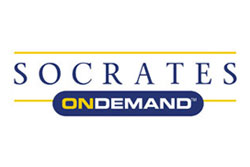The Des Moines area has no mountains, no oceans, and if you ask any of this country’s coastal residents, plenty of flat endless fields of corn. Or perhaps the rest of the country has no image of Greater Des Moines?
The Greater Des Moines Convention and Visitors Bureau (CVB) recently worked with Quester, a qualitative market research business, to gather feedback about the Des Moines area. Though the study showed the bureau has been mostly on track with its marketing efforts, the CVB was curious as to what image the country had of the city.
“I don’t know what they imagine, because our Quester results said a lot of people have no image of Des Moines,” said Greg Edwards, president and CEO of the CVB. “I think others think that because we are right in the middle of farm country, you might have this little town surrounded by all these cornfields, and it’s actually a big city.”
The CVB is currently at the ground level of an initiative to try to find out exactly how Des Moines wants to craft its brand, market its identity and shape how it’s viewed by potential tourists and convention goers from outside the state.
“Is it corporate insurance? Is it the financial industry? Fun? Great winters…” Edwards joked.
Des Moines has long had a strong drive-in market for tourism, attracting lots of travelers from Iowa and nearby metro areas such as Omaha, and many regional trade shows and conventions. That being said, Edwards feels that the time is right and Des Moines is now in a position because of its growth to start going after the fly-in market.
With the renovation of Veterans Memorial Auditorium, scheduled to reopen as a convention and meeting center in 2012, along with the city’s wealth of existing but fairly new venues, the city now has larger, nicer facilities and packages to use to attract larger national groups.
“We’ll be going after larger groups, more national groups, so we’ll hopefully be attracting people from more of a fly-in market,” Edwards said. “We’re going to expand and hopefully go after those markets a little bit stronger than we have in the past.”
Perhaps it’s best that many people don’t have an image of Des Moines as the CVB embarks upon its plan to brand the city and attract outsiders. Edwards said that when he brings national planners to the city, they are all pleasantly surprised at what Des Moines has to offer.
“We’ve got huge opportunities,” said Tiffany Tauscheck, the CVB’s vice president of marketing. “It is always easier to be the first in with that message rather than convincing them of something other than what they already perceive.”
Tauscheck said the first step now that the CVB has the information from internal surveys and Quester’s research is to share the information with the Greater Des Moines Partnership, the CVB board, its partners and local leaders. She said the CVB plans to spread the word in an effort to create an action plan that will be based on feedback from its partners and the community.
“We don’t want to come out with our own brand; we want it to be all encompassing,” Edwards said. “We want Des Moines to buy in, Clive to buy in, Ankeny to buy in, and really all the business partners that are out there, so we can all kind of say the same thing, which is what we have never really done.”
But, Edwards said, the ability to consider trying to brand the city only comes because of the vast development he’s seen during his 10 years leading the CVB.
“You look at what has happened in the last 10 years, from the Science Center (of Iowa) to Wells Fargo Arena, to the (John and Mary) Papajohn Sculpture Park, Bass Pro Shop, Jordan Creek (Town Center) mall, I mean every direction you go there has been good progressive movement and building,” he said.
The challenge now is capitalizing on Des Moines’ position.“It’s almost like we are in the neophyte stages of this community,” said Edwards of a community he’s seen change so much. “Well now it is all kind of coming together and continuing to come together. And it’s like how do we now continue to improve on what we have and sell what we have.”

